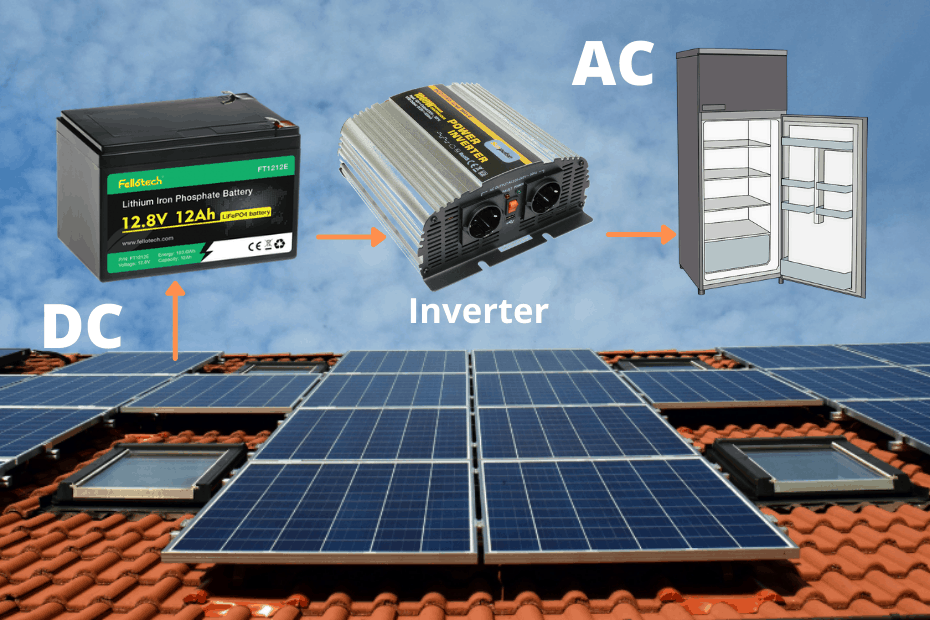
Om du funderar på att installera ett solenergisystem för ditt hem eller företag, du har förmodligen stött på termen "solinverter". Men vad är en solomriktare, exakt, och vad är dess roll i ett solenergisystem?
Kortfattat, en solomriktare är en enhet som omvandlar likströmmen (DC) el som genereras av solpaneler till växelström (AC) el som kan användas i ett hem eller företag. Detta är viktigt eftersom elektriciteten som produceras av solpaneler är DC, medan de flesta apparater och enheter i hem och företag kräver AC.
Låt oss ta en närmare titt på hur solomriktare fungerar och varför de är en viktig komponent i ett solenergisystem.
Hur fungerar solomriktare?
Solväxelriktare fungerar genom att ta likström som genereras av solpaneler och omvandla den till växelström som kan användas i hem och företag. Detta görs genom en process som kallas "inversion", där DC-spänningen först omvandlas till AC-spänning, och sedan omvandlas växelspänningen till en form som är lämplig för användning i hem och företag.
Det finns två huvudtyper av solväxelriktare: strängväxelriktare och mikroväxelriktare. Strängväxelriktare är den vanligaste typen och används i de flesta bostads- och kommersiella solenergisystem. De är installerade på en central plats och kopplas till flera solpaneler i en serie (eller "sträng"). Mikroväxelriktare, å andra sidan, installeras på varje enskild solpanel och omvandlar DC-elen till AC-el direkt vid källan.
Oavsett vilken typ av växelriktare som används, den grundläggande funktionen är densamma: att omvandla den DC-el som produceras av solpaneler till AC-el som kan användas i hem och företag.
Varför är solväxelriktare viktiga?
Solväxelriktare är en viktig komponent i ett solenergisystem eftersom de tillåter DC-elektricitet som genereras av solpaneler att användas i hem och företag. Utan solomriktare, DC-elektriciteten som produceras av solpaneler skulle vara värdelös för de flesta apparater och enheter, som kräver växelström för att fungera.
Förutom att konvertera DC-el till AC-el, solomriktare spelar också en viktig roll för att övervaka solenergisystemets prestanda. De samlar in data om den energi som produceras av solpanelerna, samt den energi som förbrukas av hemmet eller företaget, och överför dessa data till systemets övervakningsprogramvara. Detta gör det möjligt för husägare och företagsägare att spåra prestandan för sina solenergisystem och identifiera eventuella problem eller ineffektivitet.
Vilka är de olika typerna av solväxelriktare?
Som nämnts tidigare, det finns två huvudtyper av solväxelriktare: strängväxelriktare och mikroväxelriktare. Låt oss ta en närmare titt på varje typ:
Strängväxelriktare: Stringväxelriktare är den vanligaste typen av solväxelriktare och används i de flesta bostads- och kommersiella solenergisystem. De är installerade på en central plats och kopplas till flera solpaneler i en serie (eller "sträng"). Strängväxelriktare är billigare än mikroväxelriktare och är lättare att installera, men de kan vara mindre effektiva i situationer där solpanelerna inte alla är vända åt samma håll eller upplever olika nivåer av skuggning.
Mikroväxelriktare: Mikroväxelriktare installeras på varje enskild solpanel och omvandlar DC-elen till AC-el direkt vid källan. Detta gör dem mer effektiva än strängväxelriktare i situationer där solpanelerna inte alla är vända åt samma håll eller upplever olika nivåer av skuggning. dock, mikroväxelriktare är dyrare än strängväxelriktare och är mer komplicerade att installera.
Förutom strängväxelriktare och mikroväxelriktare, det finns även andra typer av solväxelriktare, inklusive effektoptimerare och hybridväxelriktare. Effektoptimerare
liknar mikroinvertrar genom att de är installerade på varje enskild solpanel, men istället för att omvandla DC-elektricitet till AC-elektricitet, de optimerar likströmseffekten från varje panel innan den skickas till en central växelriktare. Detta kan förbättra systemets effektivitet och minska effekterna av skuggning eller panelfel.
Hybridväxelriktare, som namnet antyder, är växelriktare som kan fungera med både solpaneler och ett reservbatterisystem. De blir mer populära när husägare och företag försöker minska sitt beroende av nätet och öka sitt energioberoende.
Vad ska du tänka på när du väljer en solcellsinverterare?
När du väljer en solomriktare, det finns några faktorer att ta hänsyn till:
- Systemstorlek: Storleken på ditt solenergisystem avgör storleken på den växelriktare du behöver. Se till att du väljer en växelriktare som är dimensionerad för ditt system.
- Effektivitet: Leta efter en växelriktare med hög effektivitet, eftersom detta kommer att bidra till att maximera energiuttaget från ditt solenergisystem.
- Typ: Fundera på om en strängväxelriktare eller mikroväxelriktare är bättre lämpad för ditt system. Om alla dina solpaneler är vända åt samma håll och inte påverkas av skuggning, en stränginverterare kan vara det bästa valet. Om dina paneler är vända åt olika håll eller påverkas av skuggning, en mikroinverter eller effektoptimerare kan vara ett bättre alternativ.
- Funktioner: Vissa solomriktare kommer med ytterligare funktioner, till exempel övervakningsprogramvara eller möjligheten att arbeta med ett reservbatterisystem. Fundera över vilka funktioner som är viktiga för dig.
- Kosta: Självklart, kostnaden är också en faktor att ta hänsyn till. Medan strängväxelriktare i allmänhet är billigare än mikroväxelriktare eller effektoptimerare, de kanske inte är det bästa valet för alla situationer.
Slutsats
Sammanfattningsvis, en solomriktare är en enhet som omvandlar DC-elektriciteten som genereras av solpaneler till AC-elektricitet som kan användas i hem och företag. Solinverterare är en viktig komponent i ett solenergisystem, eftersom de tillåter DC-elektricitet som produceras av solpaneler att användas i de flesta apparater och enheter. Det finns två huvudtyper av solväxelriktare: strängväxelriktare och mikroväxelriktare, var och en med sina egna för- och nackdelar. När du väljer en solomriktare, det är viktigt att ta hänsyn till faktorer som systemstorlek, effektivitet, typ, drag, och kostnad. Genom att välja rätt solomriktare, du kan hjälpa till att maximera energiuttaget från ditt solenergisystem och minska ditt beroende av nätet.
